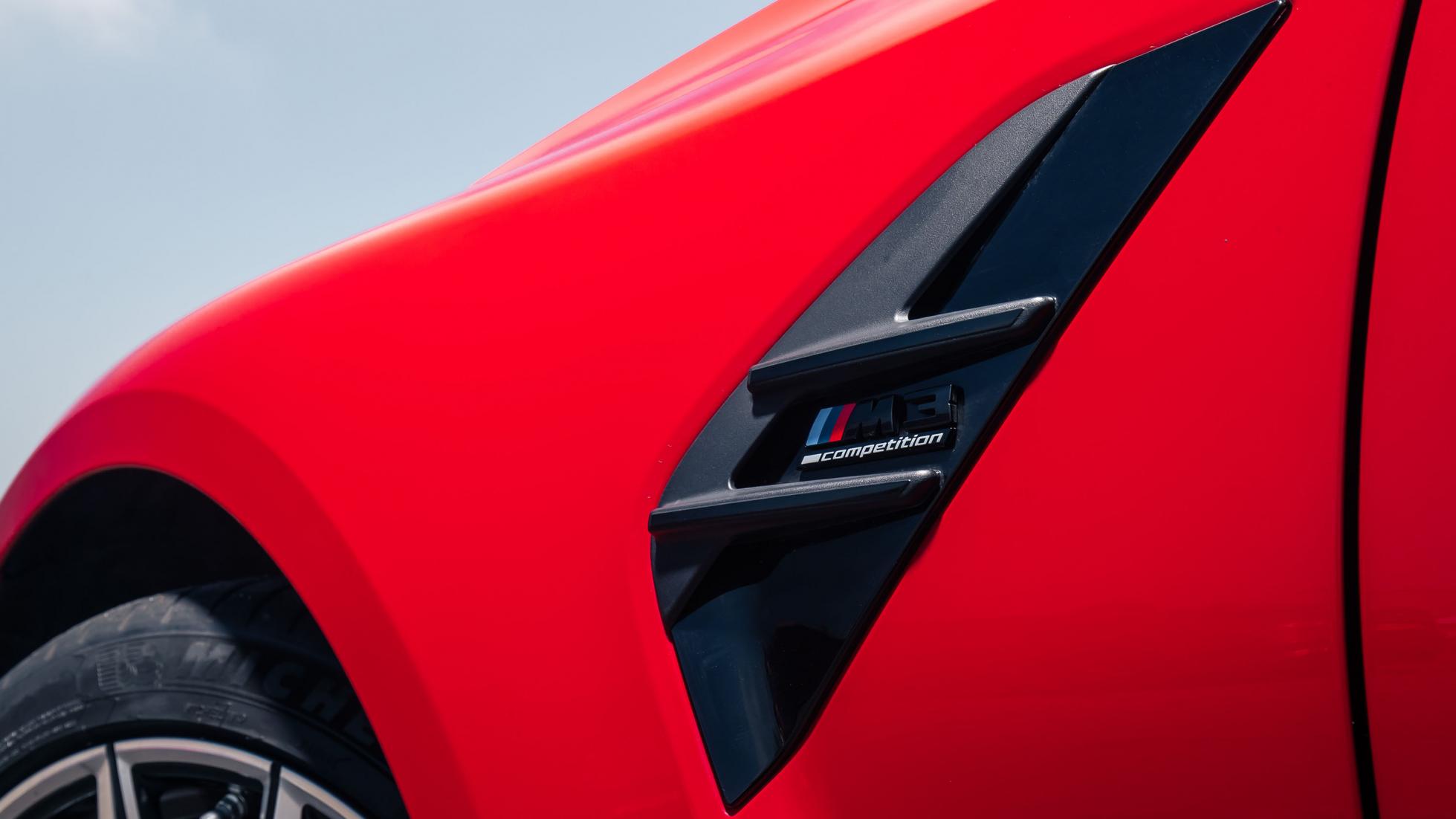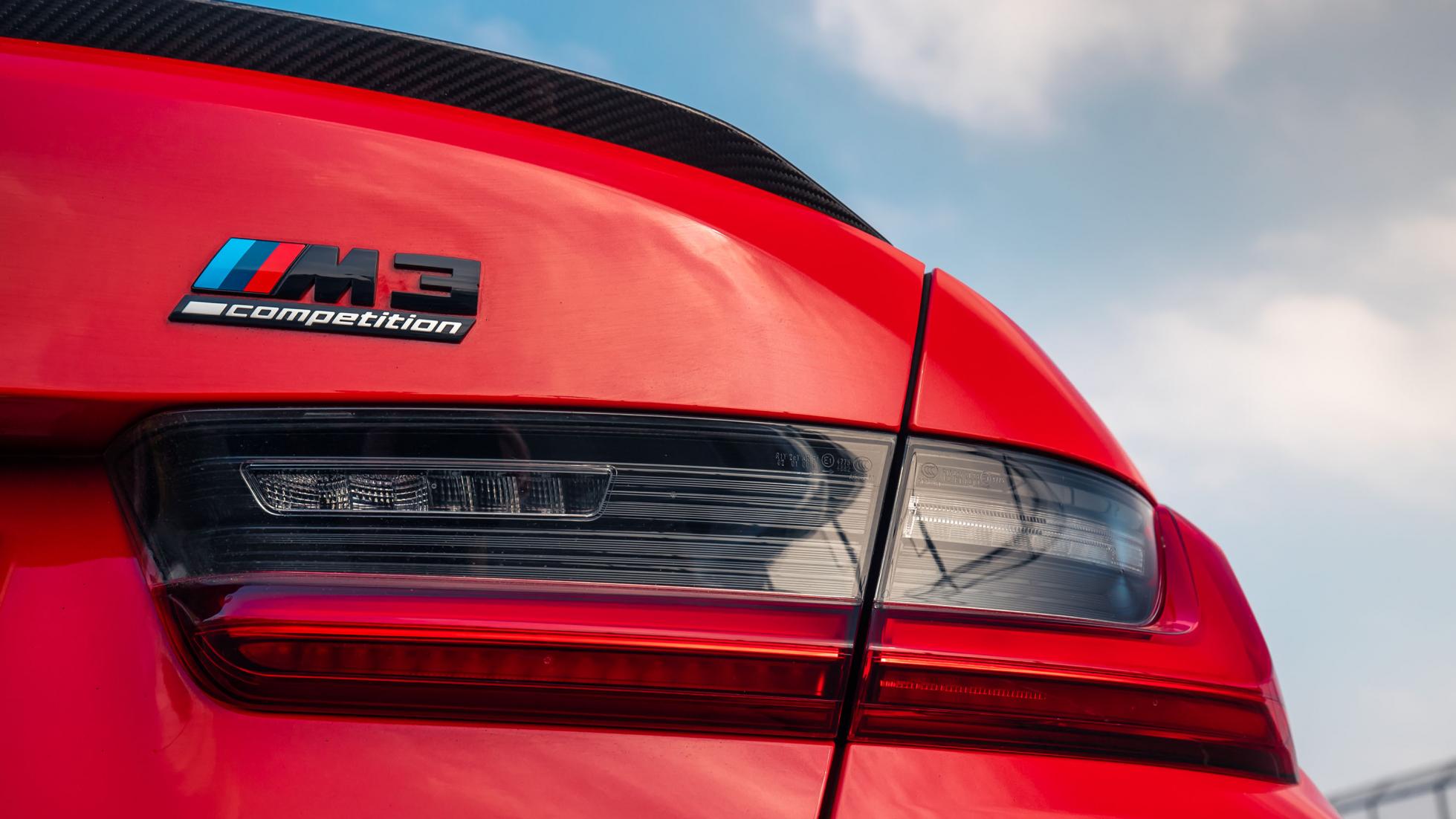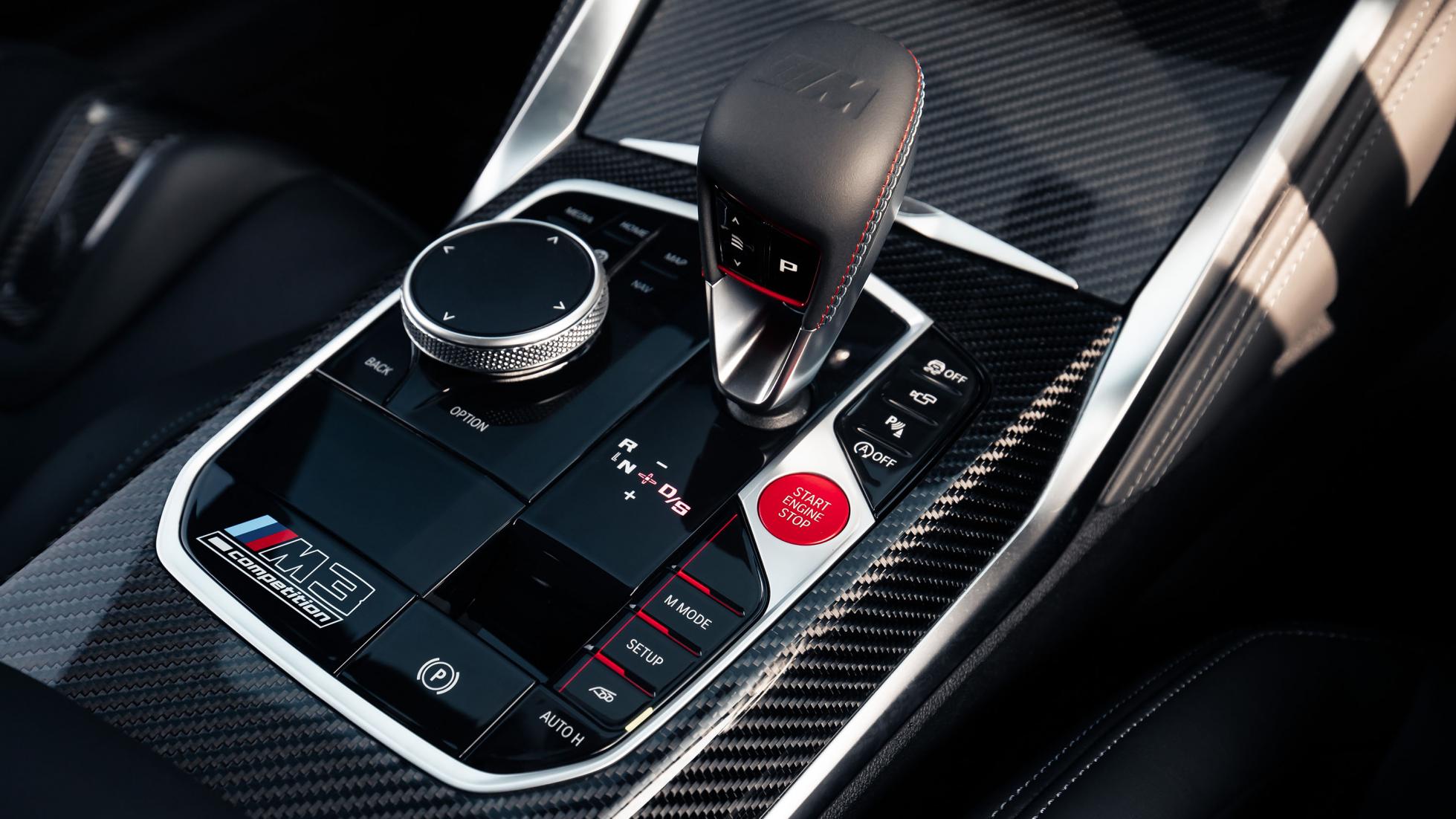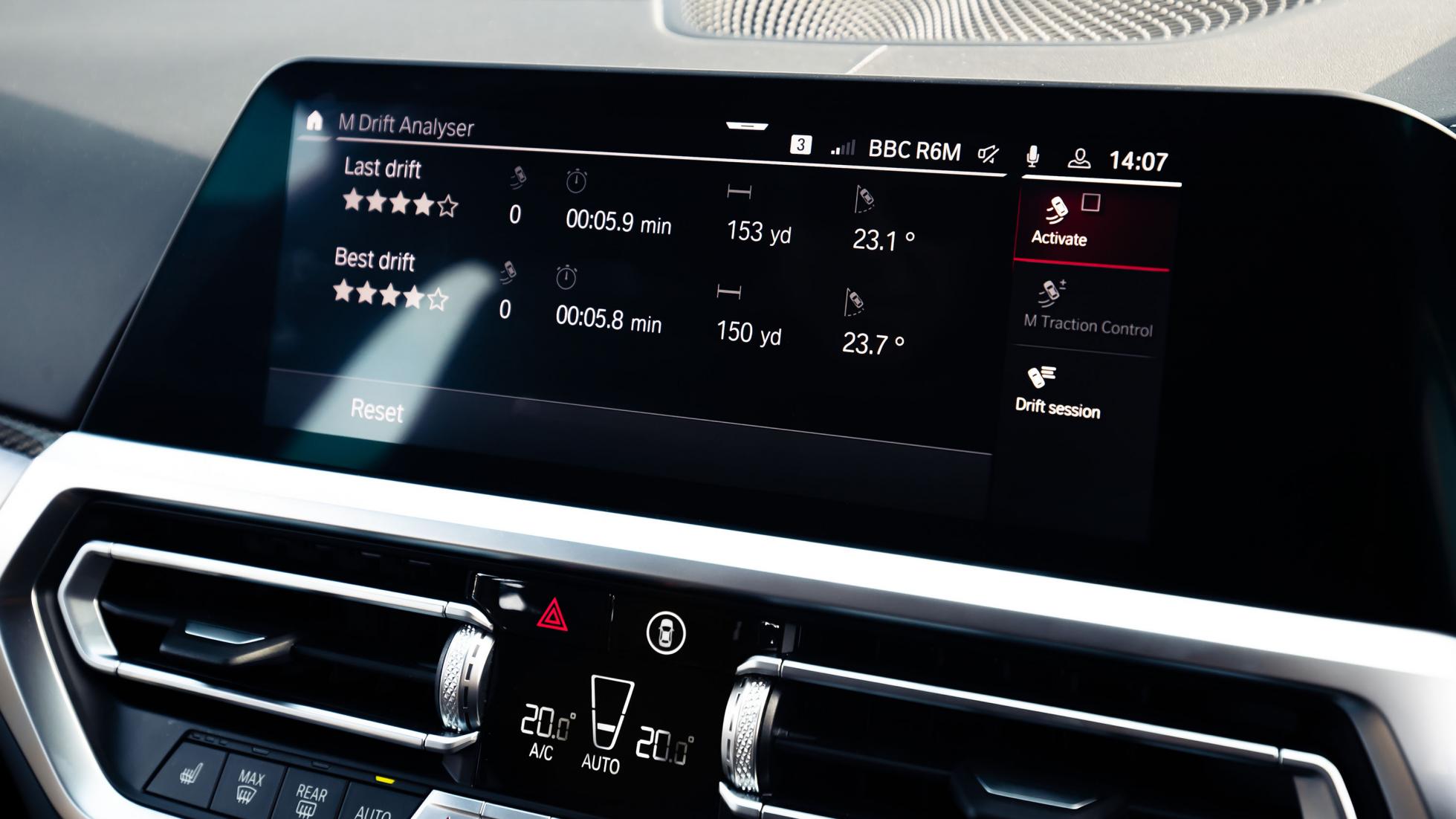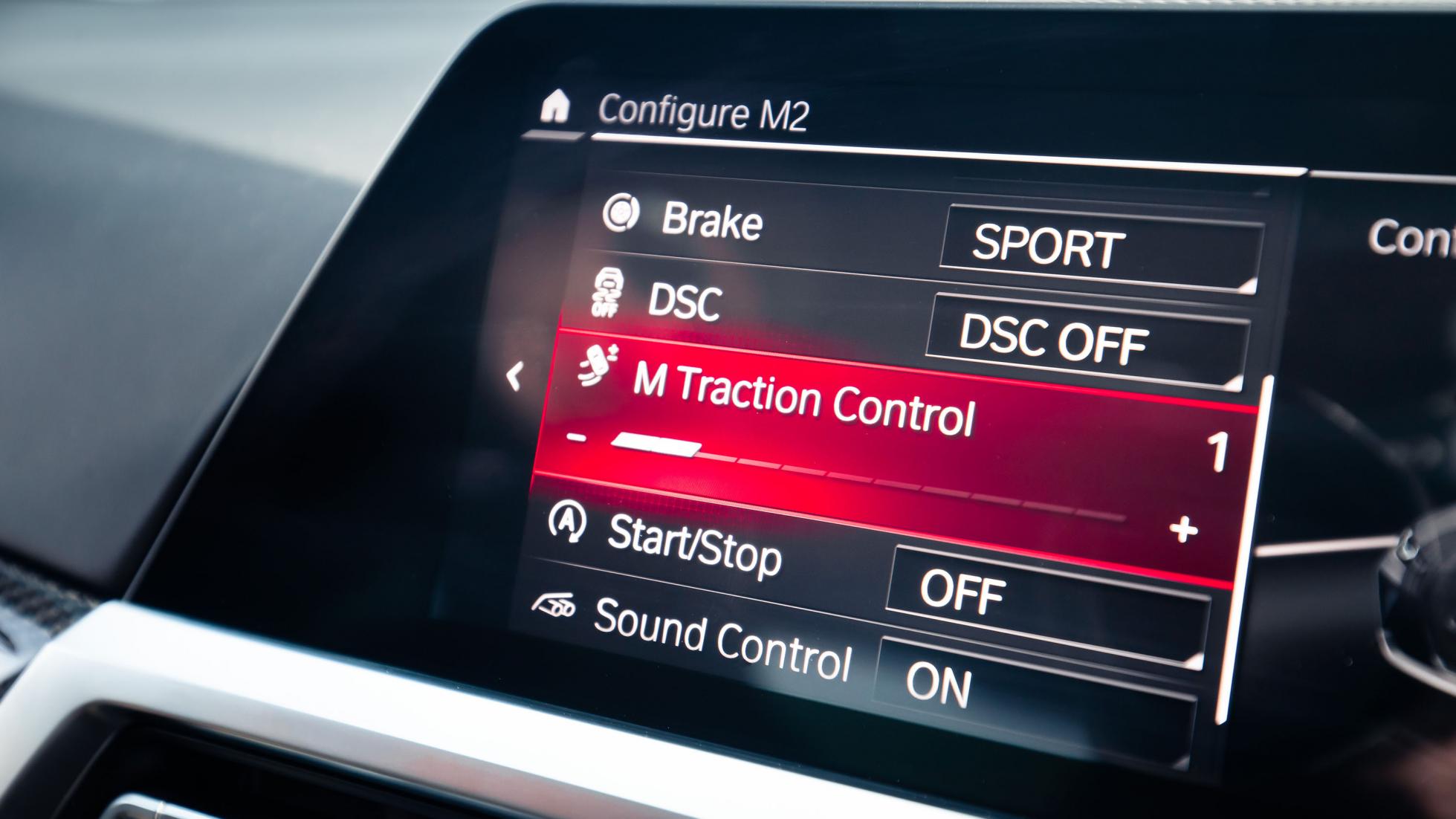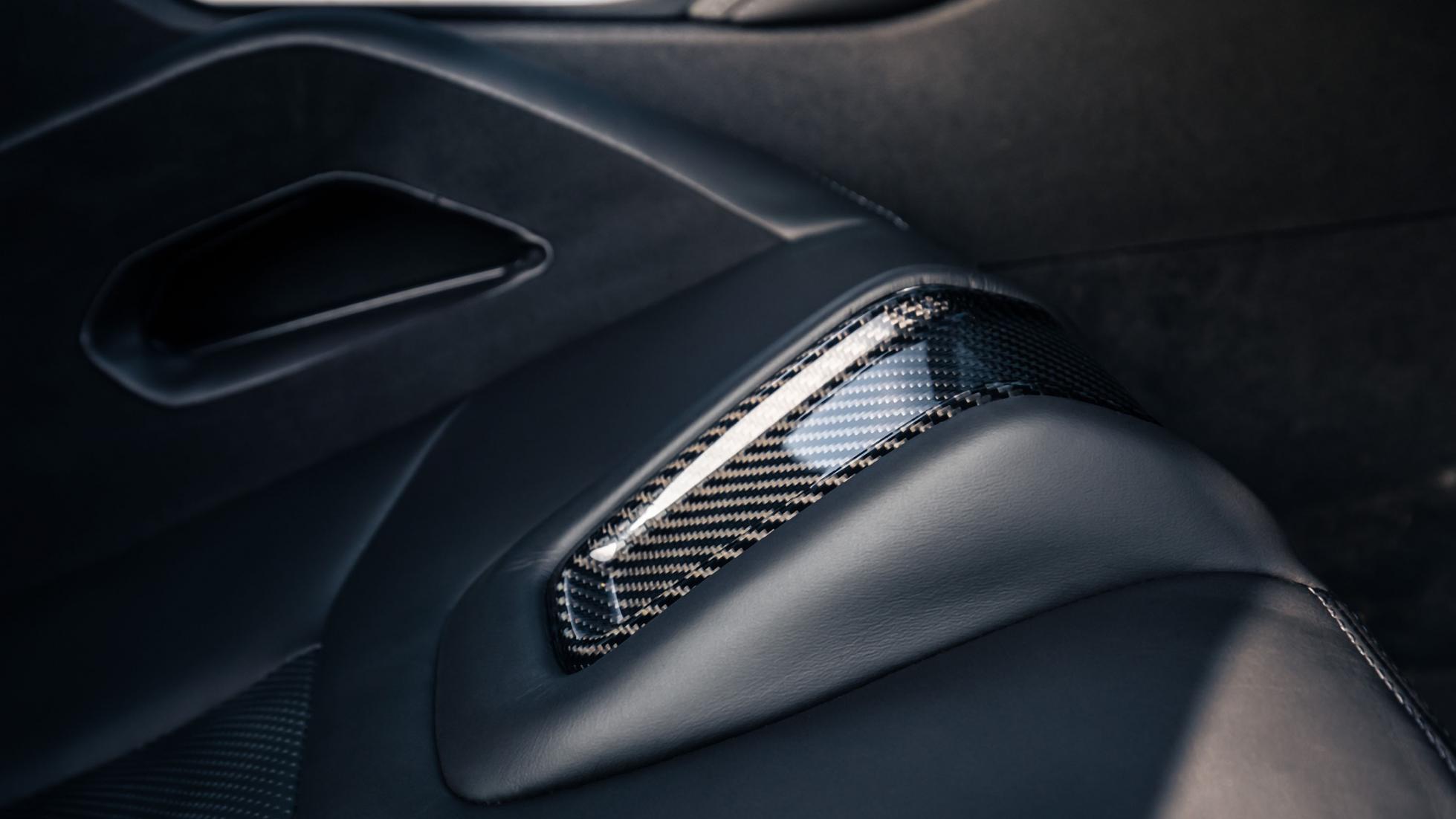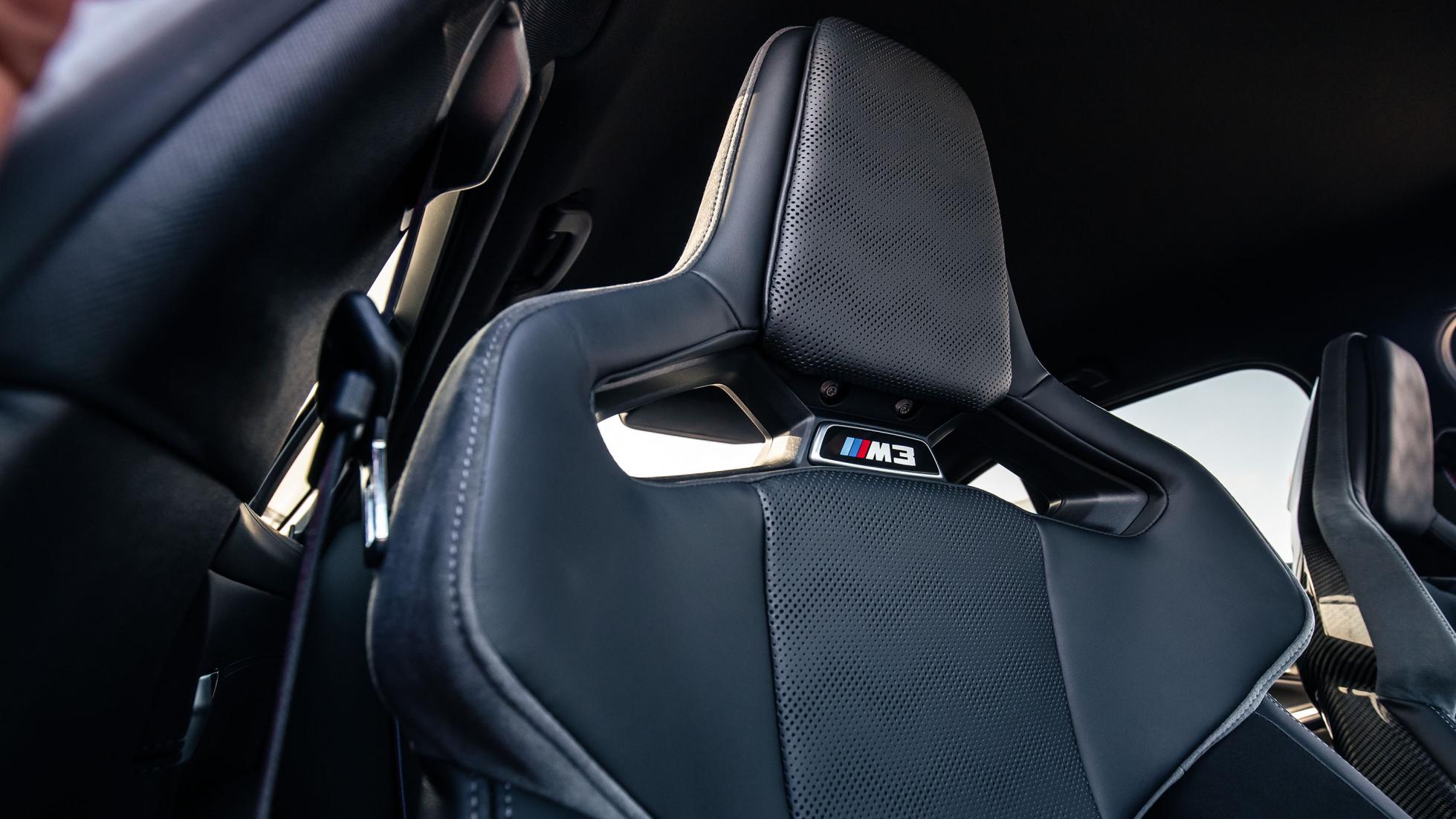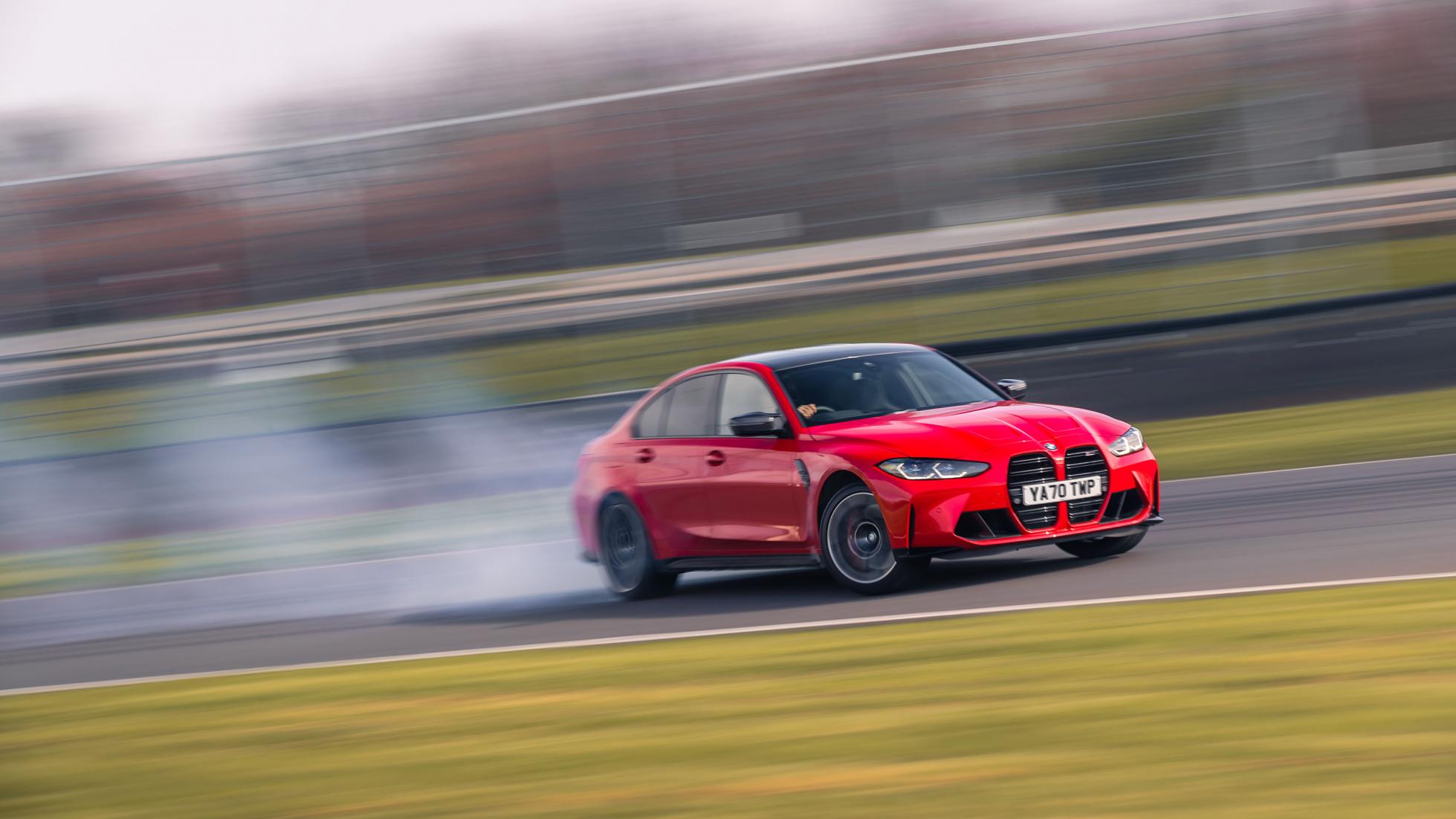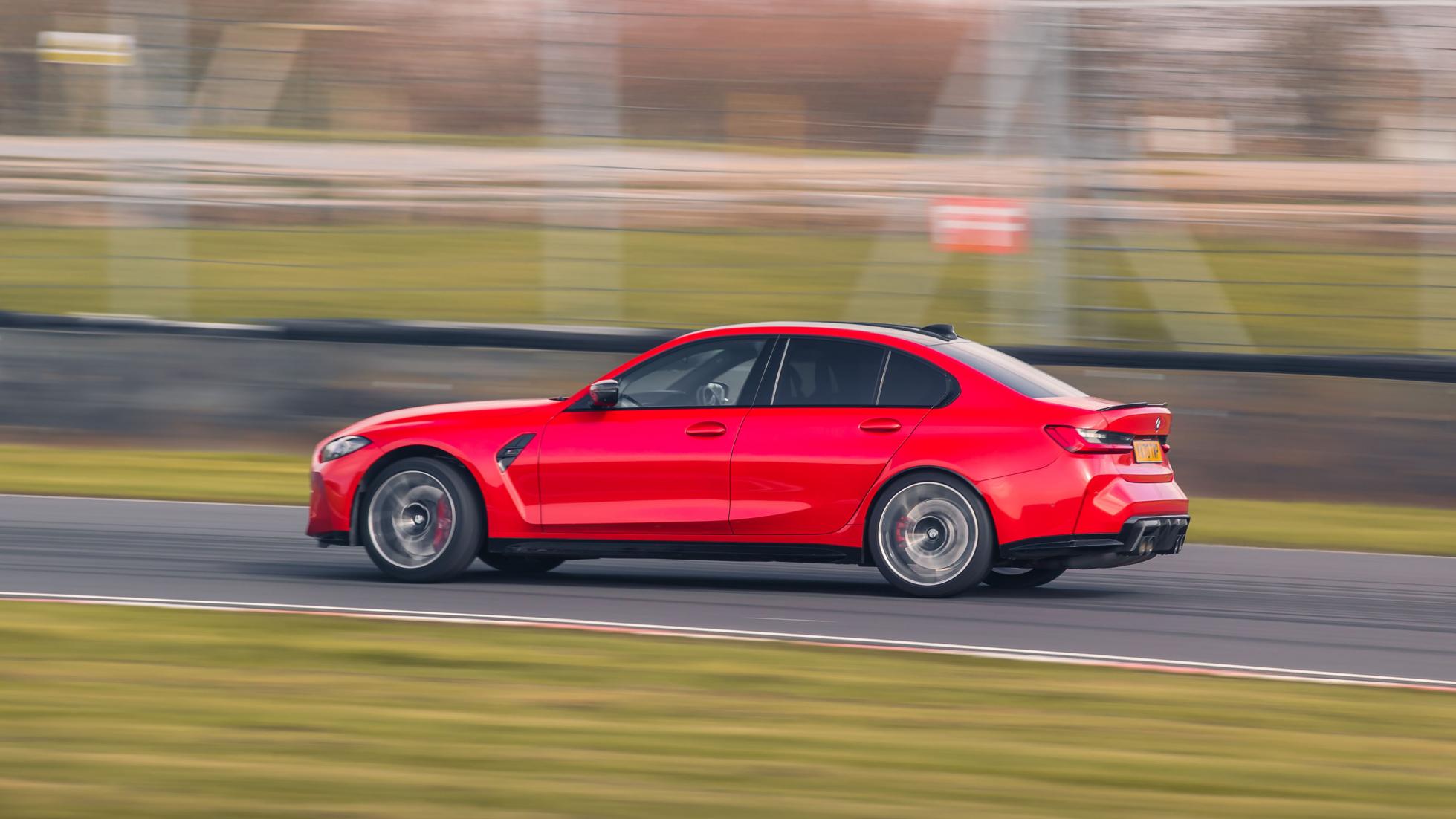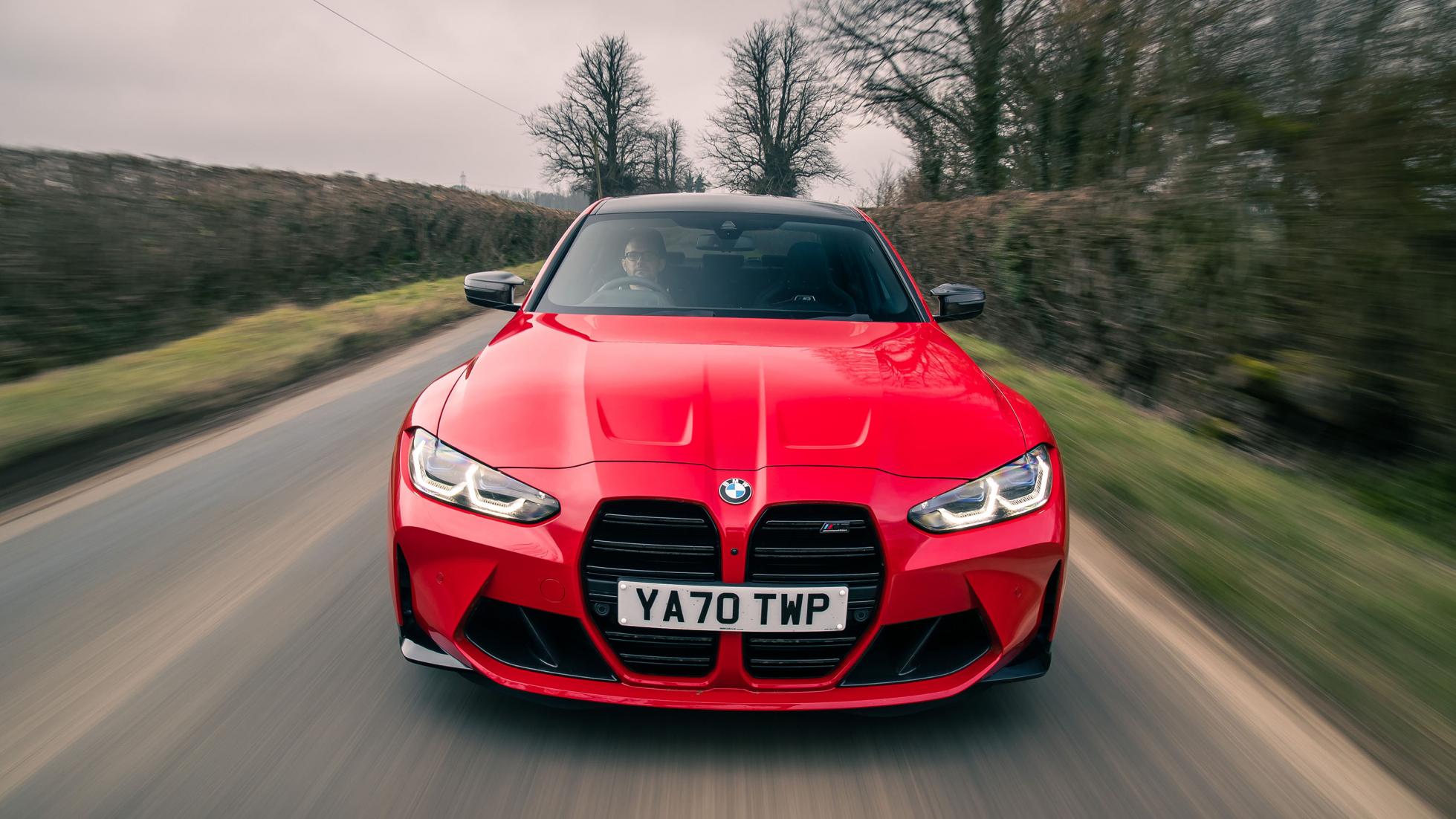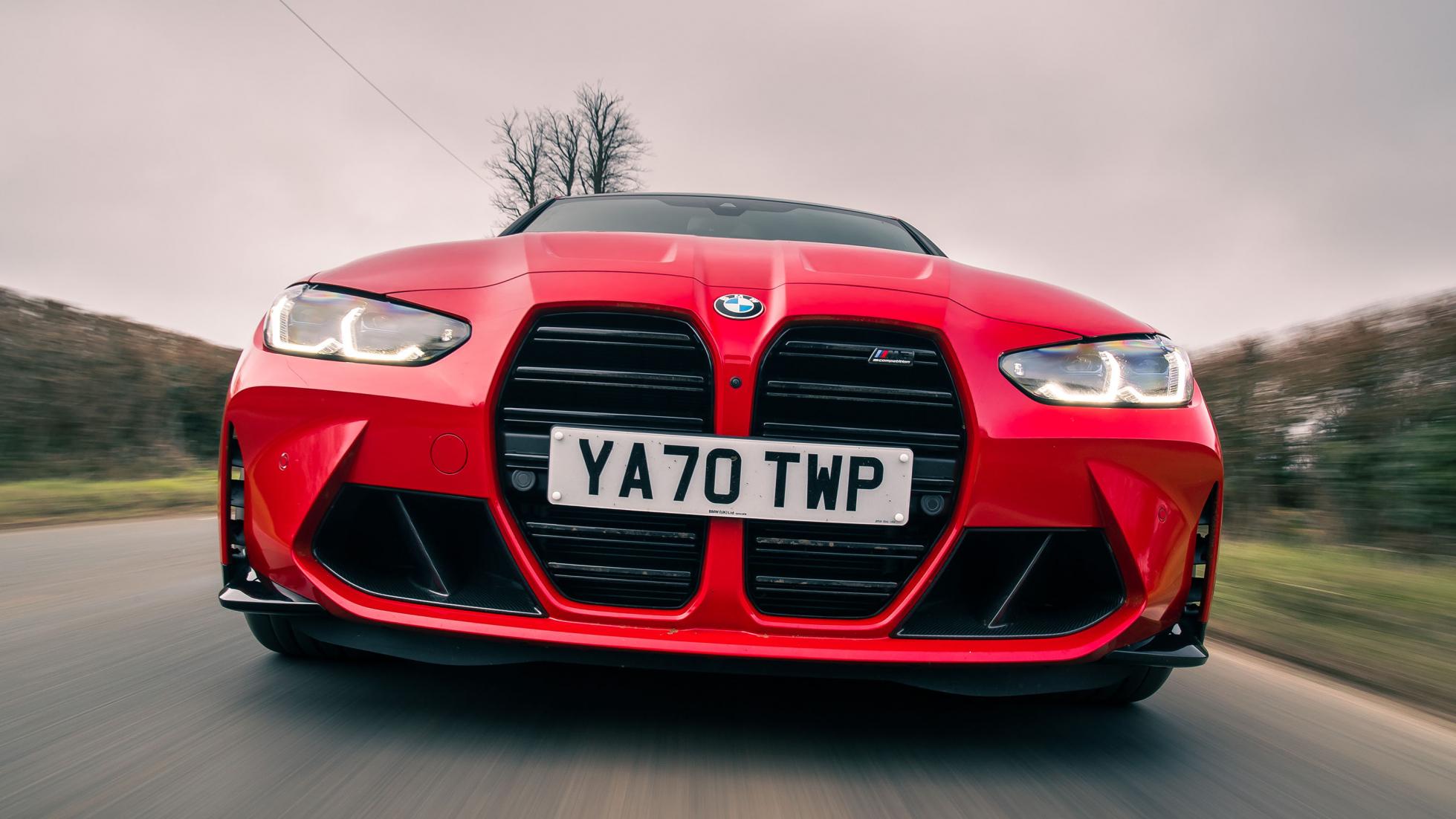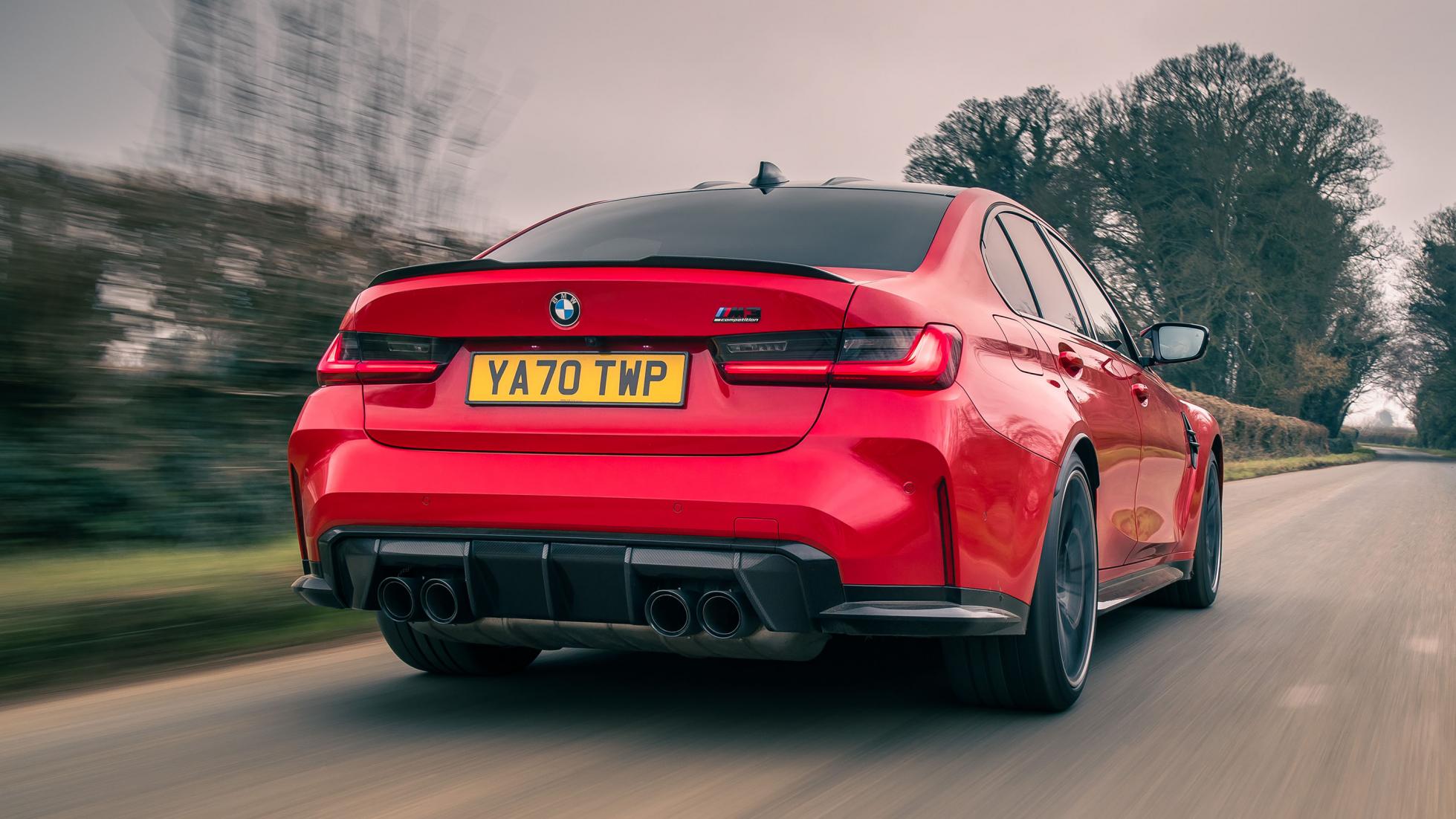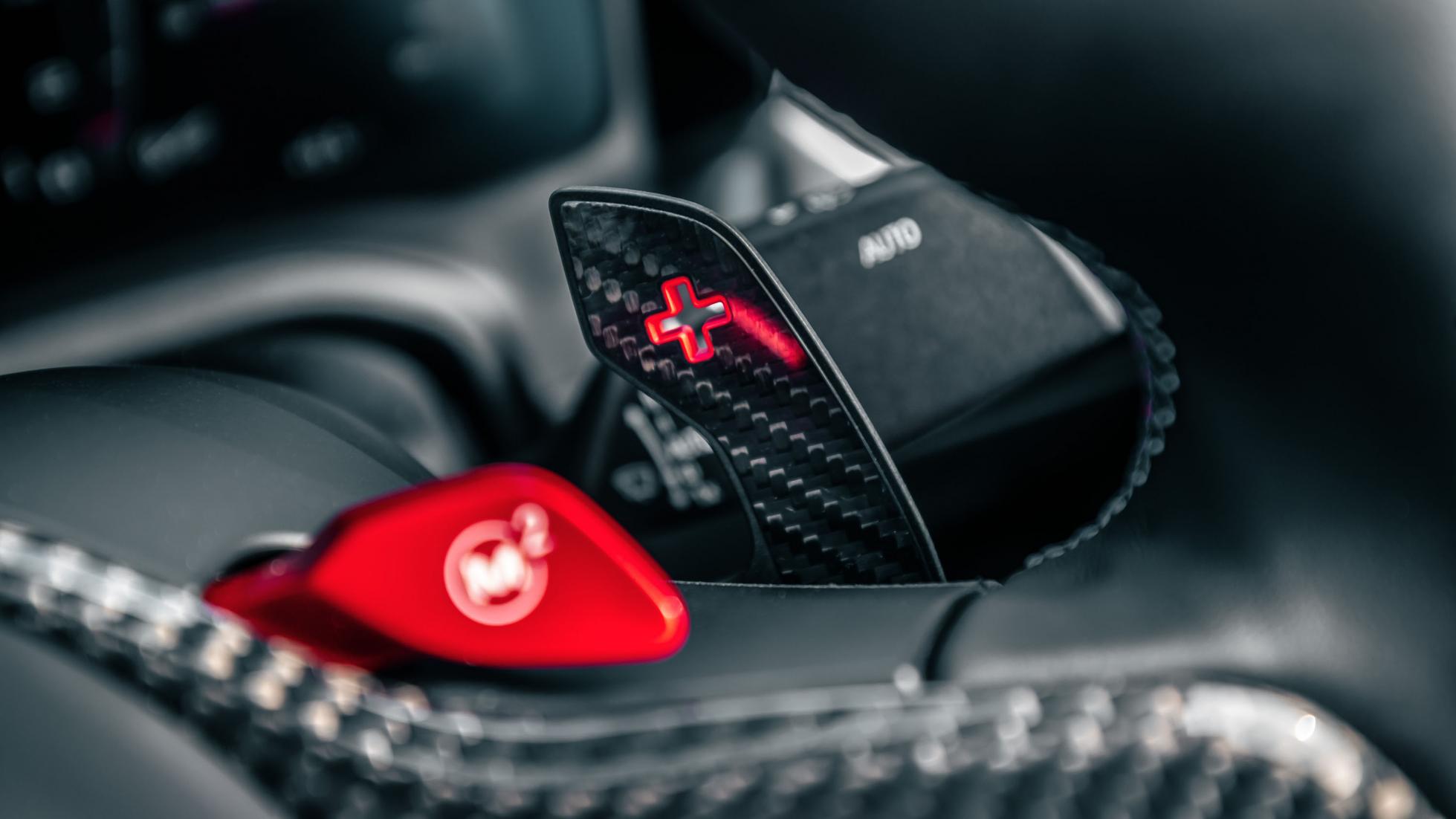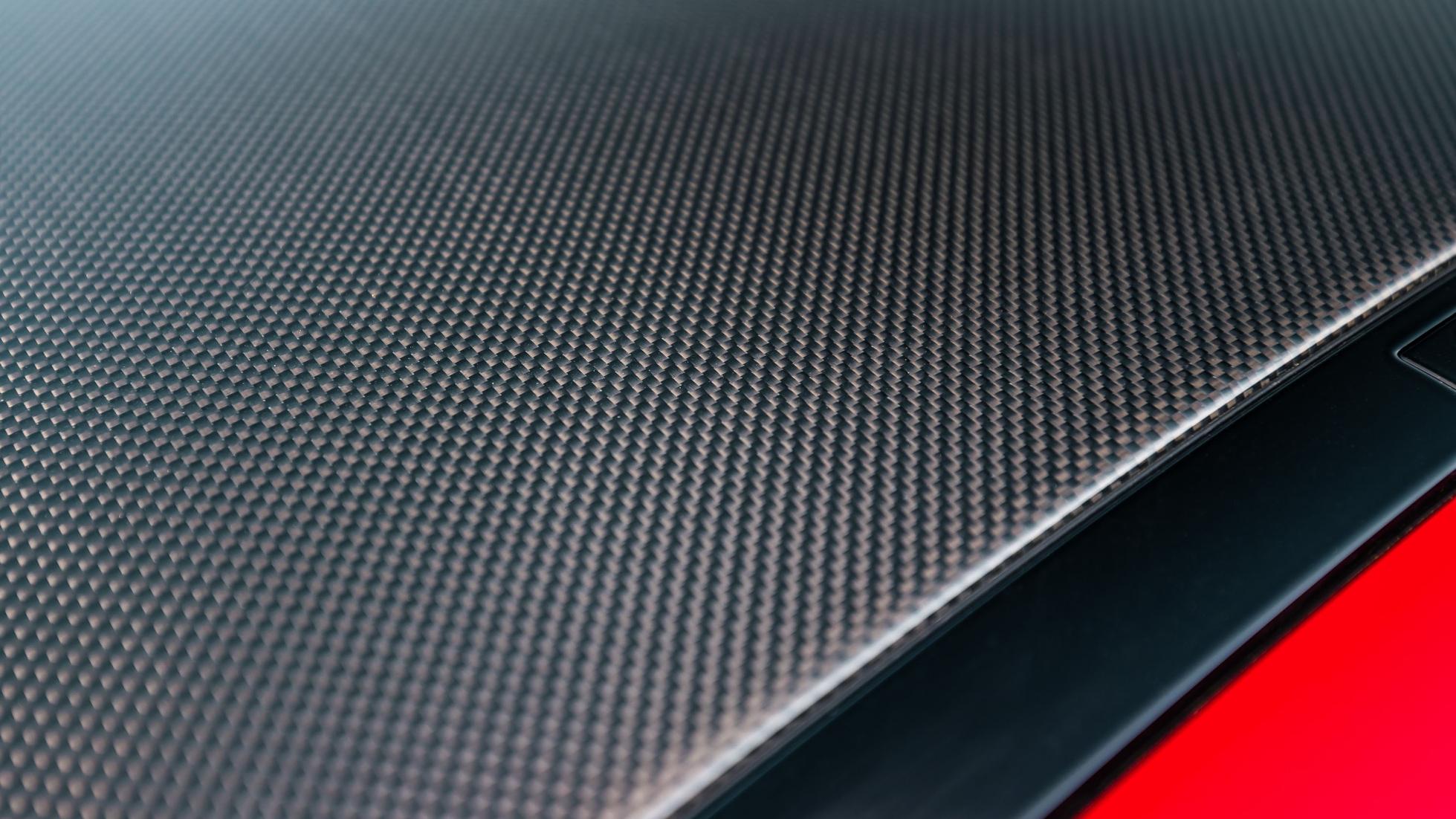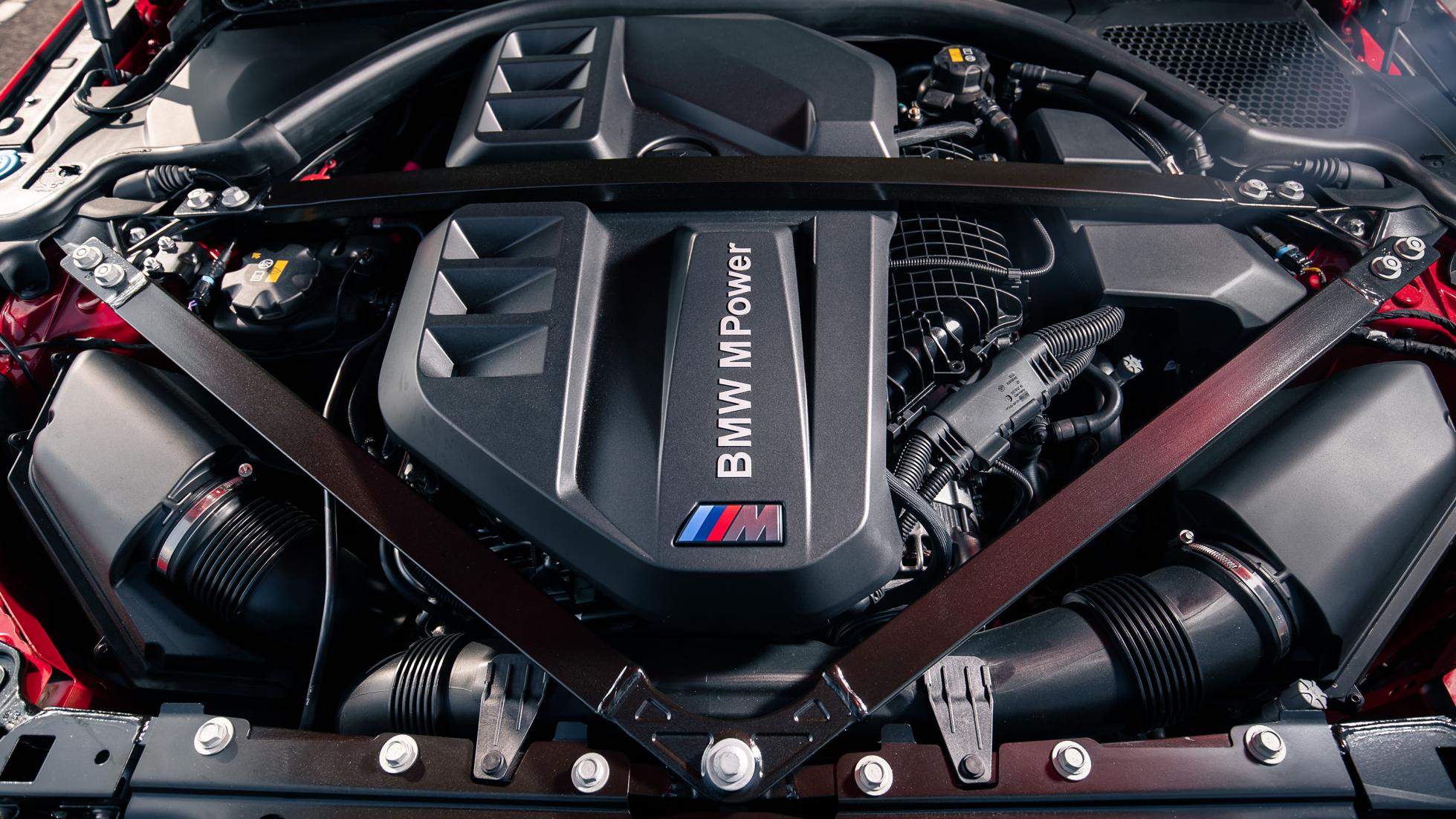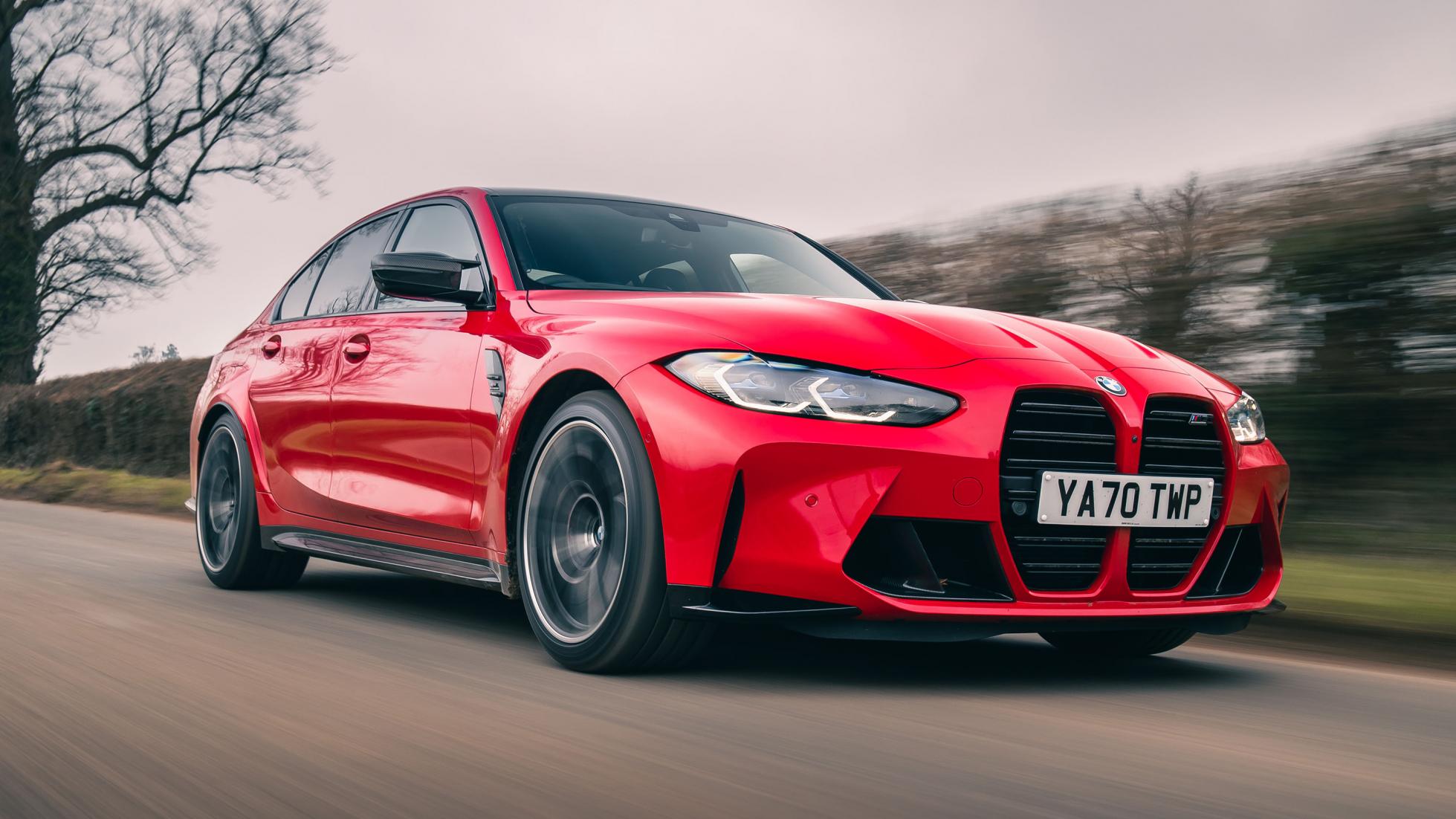
OVERVIEW – What is it?
It’s the new BMW M3, as if you couldn’t tell. Still a twin turbo straight six under the bonnet, still rear-wheel drive, still a simple four-door bodyshell – that much is carried over from its predecessor.
Then we get into what’s new: an eight-speed automatic controversially replaces the seven-speed twin clutch, currently a six-speed manual only comes with the non-Competition M3, which isn’t coming to the UK. In the previous M3’s final year on sale, less than one per cent of buyers went manual. You’ve only got yourselves to blame. Instead the only choice is the high spec M3 Competition (which only partially accounts for the steep price increase to £74,755 (RM418k)) and from July you’ll be able to order it with four-wheel drive.
This is the sixth generation M3, continuing a lineage that dates back to 1986. It started as a naturally aspirated four cylinder and apart from one foray into V8 power, it’s used a straight six ever since. Once again, it’s launched at the same time as the two-door BMW M4 Competition (internally designated the G82, while this is the G80) and once again, hopes are high that this most iconic of sports saloons has got what it takes to reignite the class. The Alfa Giulia Quadrifoglio is starting to age, the current Audi RS4 has never been great and rumours abound the next C63 will halve its cylinder count and go hybrid. We’re relying on BMW to prove it still cares.
The engine has come in for a massive amount of work. On paper it looks like the 2,993cc unit has been largely carried over, and yes, the S58 is a development of the old B58, but check this out: the crank is taken directly from the M4 GT3 race car, the turbos are new larger, monoscroll blowers and the cylinder head is 3D printed enabling it to cope with injection pressures of 350 bar. The result is an extra 60bhp and 100 Nm of torque, taking the standard M3 beyond 500bhp for the first time (a feat it shares with its most direct 50rival, the Alfa Romeo Giulia), while developing a colossal 649Nm from 2,750-5,500rpm.
The trouble is it’s got more weight to push around. On paper the 1,730kg newcomer weighs over 150kg more than its F80 predecessor, giving it only a slight power to weight advantage and a claimed 0-100kph time only 0.1secs faster. Higher spec is to blame apparently, the firm claiming like-for-like weight is only up about 60kg. The new M3 is certainly well equipped. In addition to the usual suite of driver safety aids, there’s also M Drive Professional which includes a lap timer, driving analysis coach, data recorder and – I kid you not – an M Drift Analyser to rate your skids. It’s a tough marker. A huge drift through Quarry corner at Castle Combe – 160 yards at 24 degrees of oversteer, according to the car – was rated four stars.
LED lights are standard, there’s a 12.3-inch dash display and another 10.25-inch centre screen for the infotainment, three zone climate control, 16 speaker Harman Kardon hifi, gesture control – all before you get to the option packs, such as £7,995 (RM45k) M Pro which brings carbon ceramic brakes and a raising of the speed limiter from 250 to 290kph.
There’s a lot of carbon included, from the roof (incorporating twin ridges) to the steering wheel, console and gearshift paddles. Ah yes, the gearbox. It’s a ZF with claimed 150ms shift times. If you want to save weight with more carbon, the brakes are 15kg lighter all round despite being bigger (a vast 400mm diameter front discs, against a still massive 380mm), and there are optional front carbon seats saving a total of 9.6kg. The wheels are 19s at the front, 20s at the back, clad in Michelin Pilot Sport 4S tyres, 275s at the front, 285s out back.
Underneath the body has been comprehensively strengthened over the standard 3 Series with extra bracing and new shear panels to help transmit loads. The engine sits noticeably further back in the chassis, although the F80’s attractive carbon brace has been replaced with some cheap looking steel components.
Not great when you consider the £74,755 (RM418k) BMW is now charging for the M3 (the M4 is £1,300 (RM7.3k) more expensive). For that you get more metal – it’s 120mm longer and 20mm wider than before with a lot more choice of colour and trim. None of which completely hides the grille. Which, if we’re being honest, is less of an issue in real life. Especially when you don’t have to look at it. But nor are we convinced the new car has the same stance and attitude as its predecessor. Let’s hope it makes up for that by being dazzling to drive.
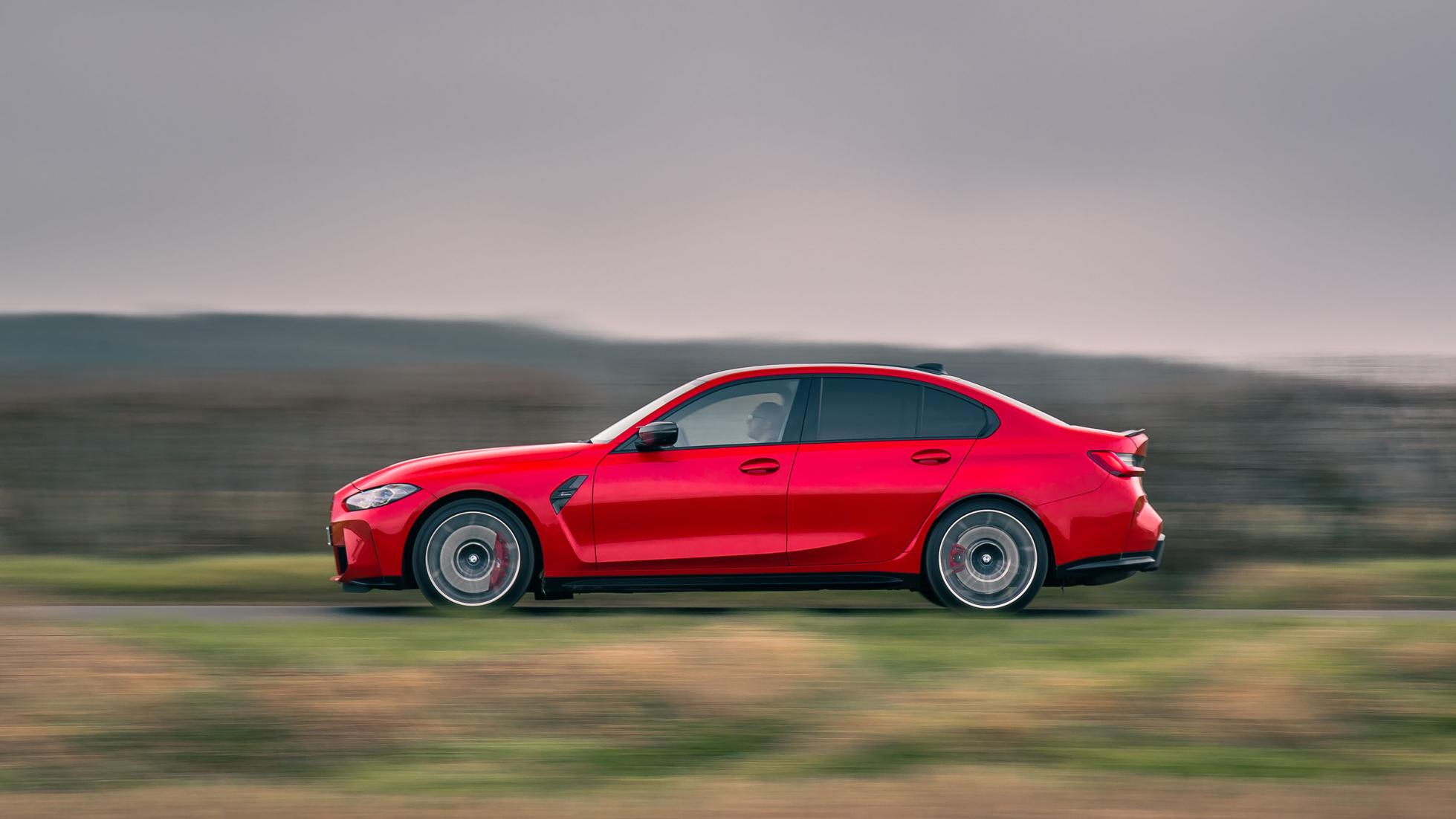
DRIVING – What is it like on the road?
It’s the steering that strikes you first. You can’t believe how accurate it is. It’s electric, so there’s little feedback and yet within a few yards you know exactly what it’s up to, exactly what inputs are needed, can place the car with utter precision. And as you go faster, you sense exactly where the limits are and have confidence to approach them. It’s uncanny, one of the very best steering systems available on any car today.
Of course steering doesn’t operate in isolation. To get that behaviour you need precise damping, suspension set-up, calibration and all the rest. This is BMW’s happy place. All of this, at both ends, is masterfully done. Unless you’re on a circuit the front end appears not to understand there’s such a thing as understeer, so whatever you do with the steering you get this deeply satisfying pinpoint response.
Through corners the suspension becomes the communicator, letting you know how hard it’s working, allowing you to play with the balance and then as you come out the other side, it’s the electronically controlled differential that supplies the magic. The rear end is as accurate and placeable as the front. There seems as direct a link between right foot and rear axle as between hands and front axle. Engine response and torque is sensational, and again there seems to be this rigid communication link to your backside. Now, the M3 does like to ‘engage’ its driver. Which is another way of saying ‘unnerve’. The rear end, even with stability control on, likes to at least pretend it’s going to oversteer, to play at being mobile. There’s a lot of torque heading that way, and on a grimy, bumpy road the differential and suspension are busy keeping a lid on everything.
It’s like a boiling kettle, there’s a lot of energy contained within. With the old car, a bit of that would sometimes escape, and you’d scald yourself as a spike of power overcame traction. It could be a proper handful. Now BMW has got the whole thing under masterful control.
On a smooth track? You’re going to be staggered by the traction, rather than the immediate skids. The M3s composure under pressure is astonishing. It’s body control is rock solid (despite the weight involved) and the feel you have for what the car is doing is superb. The standard brakes are really strong and don’t seem to fade and for the first time you can choose between Comfort and Sport modes for them – Sport firming up the pedal feel and reducing travel.
Likewise, you can select various parameters for the engine, gearbox, steering and gather your preferred settings together into the M1 and M2 buttons on the steering wheel. Turn the stability control off, and you enter a new realm: 10-stage variable traction control and the Drift Analyser. It’s a gimmick, and bound to claim a few ‘watch this…’ victims. Interested in it anyway? The M3 has a quick steering rack and can be a bit edgy at skidding about until you’ve got it settled at what we’ll call a ‘significant broadside angle’.
Perhaps better to just concern yourself with how ruthlessly effective the M3 is at getting around a circuit or down a tricky road. It is worth pointing out that there are compromises for this. The low speed ride is firm, even in Comfort, although it’s better to say the dampers just aren’t interested in helping out until there’s a proper bit of pressure in them. On coarse surfaces the suspension transmits a fair bit of noise and harshness back in to the cabin. But not enough to spoil the car’s breadth of capability. It’s an easy and smooth car to drive, docile and viceless with little engine noise and smooth gearchanges. It’ll return 9.5l/100km on a long haul, 110 kph pulling 1,800rpm in top.
Ah yes, the gearbox. In fact the whole powertrain. The M3 is massively fast, and makes a perfectly decent noise. But the powertrain is the weaker link. You get massive torque from the word go and a great free-revving nature that means the M3 fires itself through each of the (commendably closely spaced) intermediate ratios pulling hard all the way to the 7,200rpm cutout, but this is not an engine that builds to a crescendo or holds something back for high revs. Earns points for its lag-free immediacy and crisp response, especially once over 3,500rpm, but this is one of those cars that’s always, always travelling far faster than you think. And is perfectly happy and capable of doing so. Whether that’s a good thing or not is up to you to decide.
But each upshift stems the flow of power. It seems weird that a punctuation as brief as 150 milliseconds – 0.15 seconds – can make such a difference, but it does. The snarl and snap of acceleration is fatally interrupted. You notice it, and you care. The auto is too smooth in its mannerisms, too apologetic in its behaviour to suit the M3. The old car’s DCT was no paragon of smoothness, lurching through each upshift, but at least you felt connected to it. By auto standards it’s a terrific gearbox, brilliantly well integrated and I suspect 95 per cent of buyers will be fine with it and love the crisp paddle action. But it’s not the right solution for an M3.
But overall what a stunning thing to drive – super-accurate, remarkable composure under pressure. It makes mincemeat of difficult roads, and although the limits are ridiculously high, the precision of the controls, steering and chassis means it’s fun at any speed. We suspected it would be handful and you’d need four-wheel drive for it to make sense. Now the case for 4WD is a lot less clear.
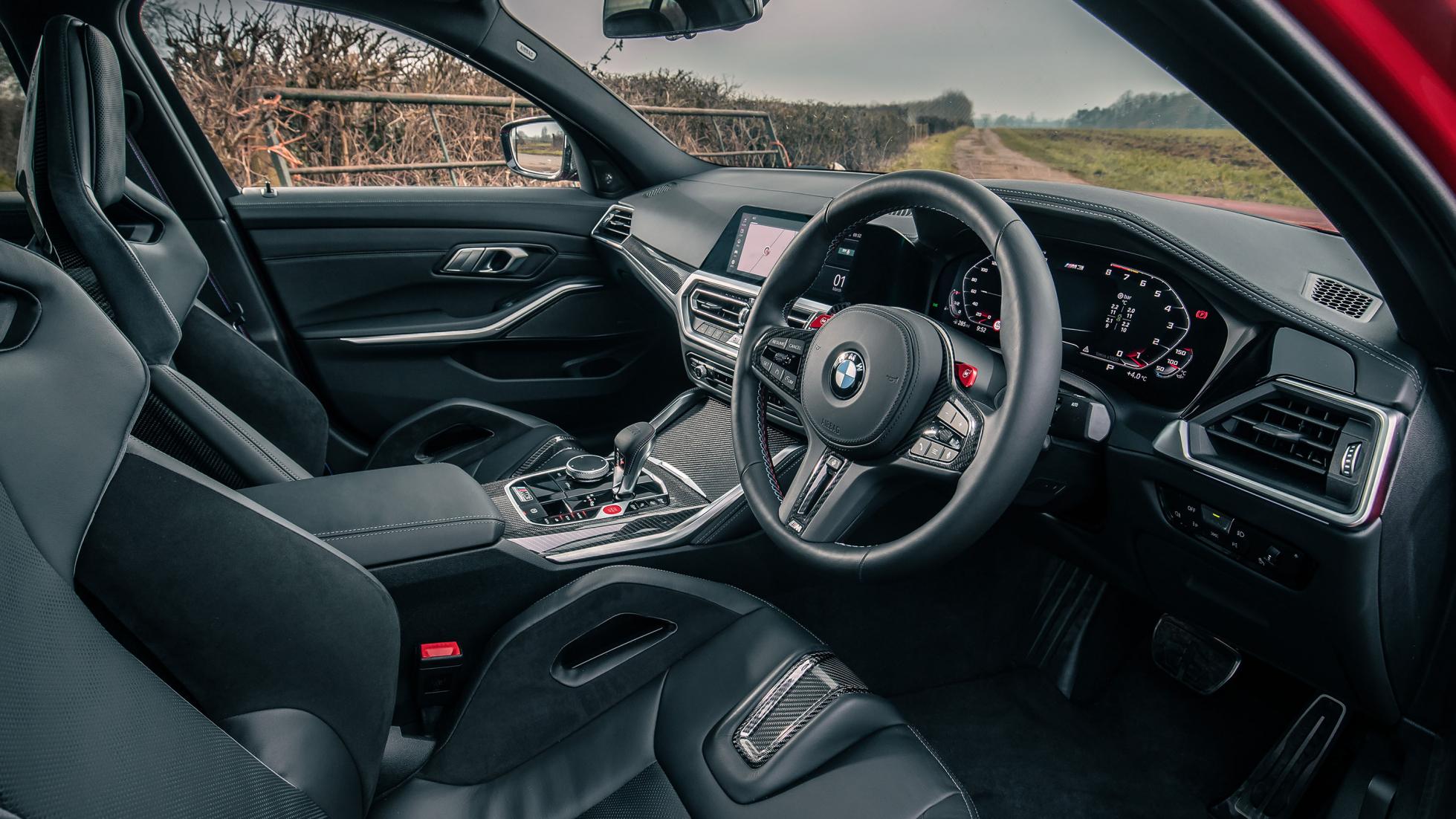
ON THE INSIDE – Layout, finish and space
Getting in, the first thing you’re aware of are the seats – assuming you’ve optioned the lightweight carbon numbers. And why wouldn’t you? They’re superbly shaped and supportive. Two things to note, however. The side bolsters dig in when you’re clambering in and out, and for that vanishingly small minority out there that likes to left foot brake, the weird carbon lump between your legs doesn’t half get in the way.
The wheel is thick-rimmed, but the driving position is spot on, and the controls all operate exactly as you want. The complication comes with the modes and instrument cluster. A button on the centre console allows you to cycle between Road, Sport and Track dash displays, none brilliantly logical to view, with the rev counter playing a secondary role. Changing individual settings is then done through the centre screen, rather than via individual buttons on the centre console. The exception being the gearchange ferocity (done on the gearlever itself) and exhaust noise.
It’s certainly less complex to operate than, say, a Mercedes-AMG A45, but it’s not as straight-forward as we’re used to from BMW. You’ll be relying on those M1 and M2 shortcut buttons. But the options, the M menus, apps and settings do give you something to play with, which certainly sets this new M3 apart from simpler cars such as the Alfa Giulia. And there’s no faulting the build and material quality of the M3. BMW has clearly worked hard to try to justify the price increase.
Most of the 120mm length gain benefited rear seat passengers, who now have appreciably more legroom (and the option, if the carbon seats have been fitted, of poking the driver directly in the kidneys). The 480-litre boot is generous as well.
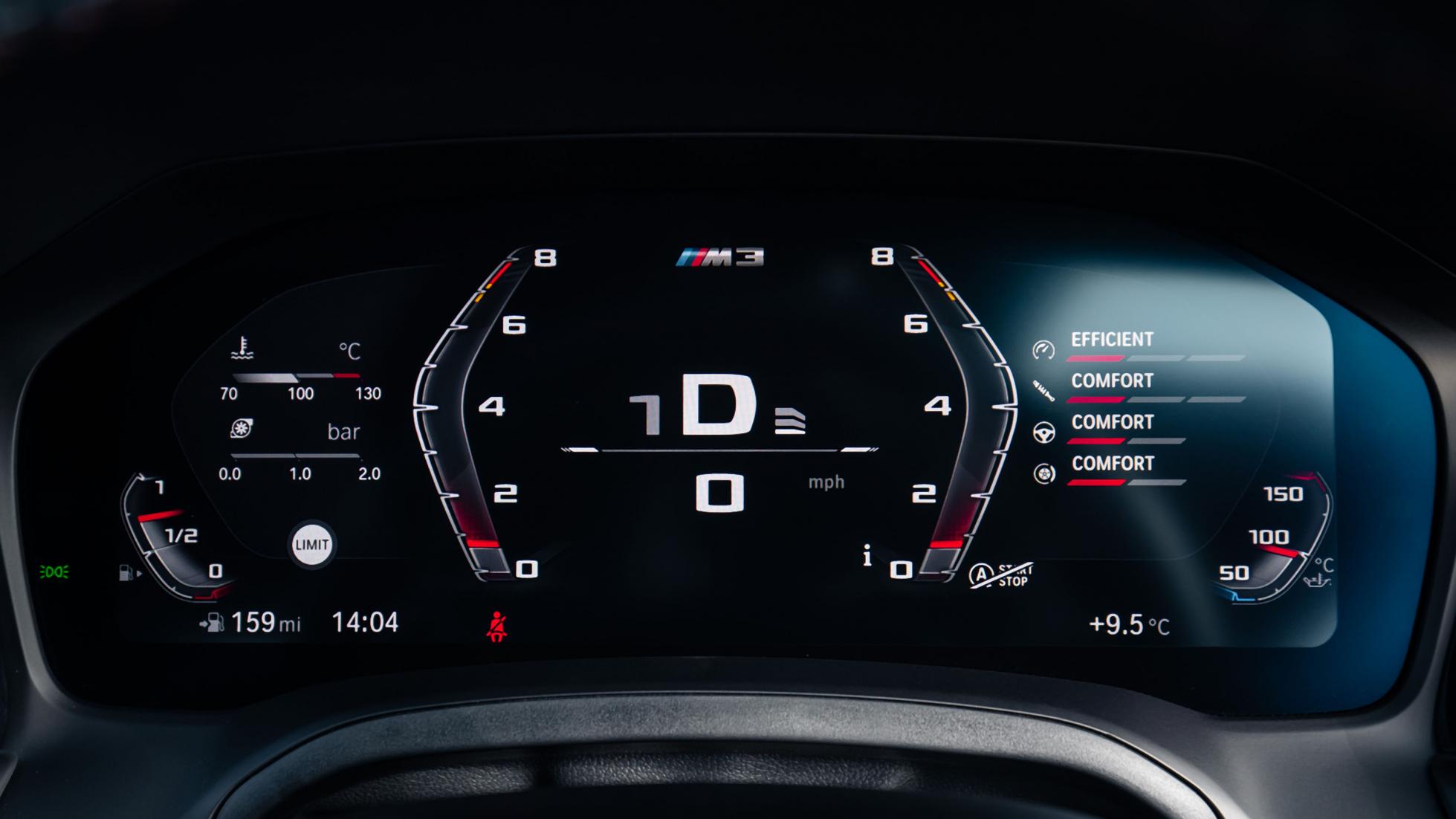
OWNING – Running costs and durability
The £74,755 (RM418k) asking price of the new M3 is broadly academic. Most people will be buying it through finance. So what’s it going to cost? Well, the cheapest we found it was £775 (RM4.3k) a month, based on a nine month down payment over four years with a mileage limit of 5,000 a year. Most firms are quoting in the region of over £850-£950 (RM4.8k-RM5.3k) a month with the various options packs adding cost above that (it’s likely to cost you £100 (RM559) more per month to have the carbon brakes of the M Pro pack alone).
A good buy? I suspect early adopters will be so keen to be seen in the controversial new M3 nothing will hold them back, and to be fair an Alfa Giulia, although listing at over £10k (RM56k) less, is almost as expensive to lease simply because it doesn’t hold its value as well.
Running costs won’t be cheap of course, but BMW offers a comprehensive servicing package, and we’d expect you to average about 12l/100km in mixed driving. Just remember you don’t need to tax the engine hard in order to enjoy the chassis.
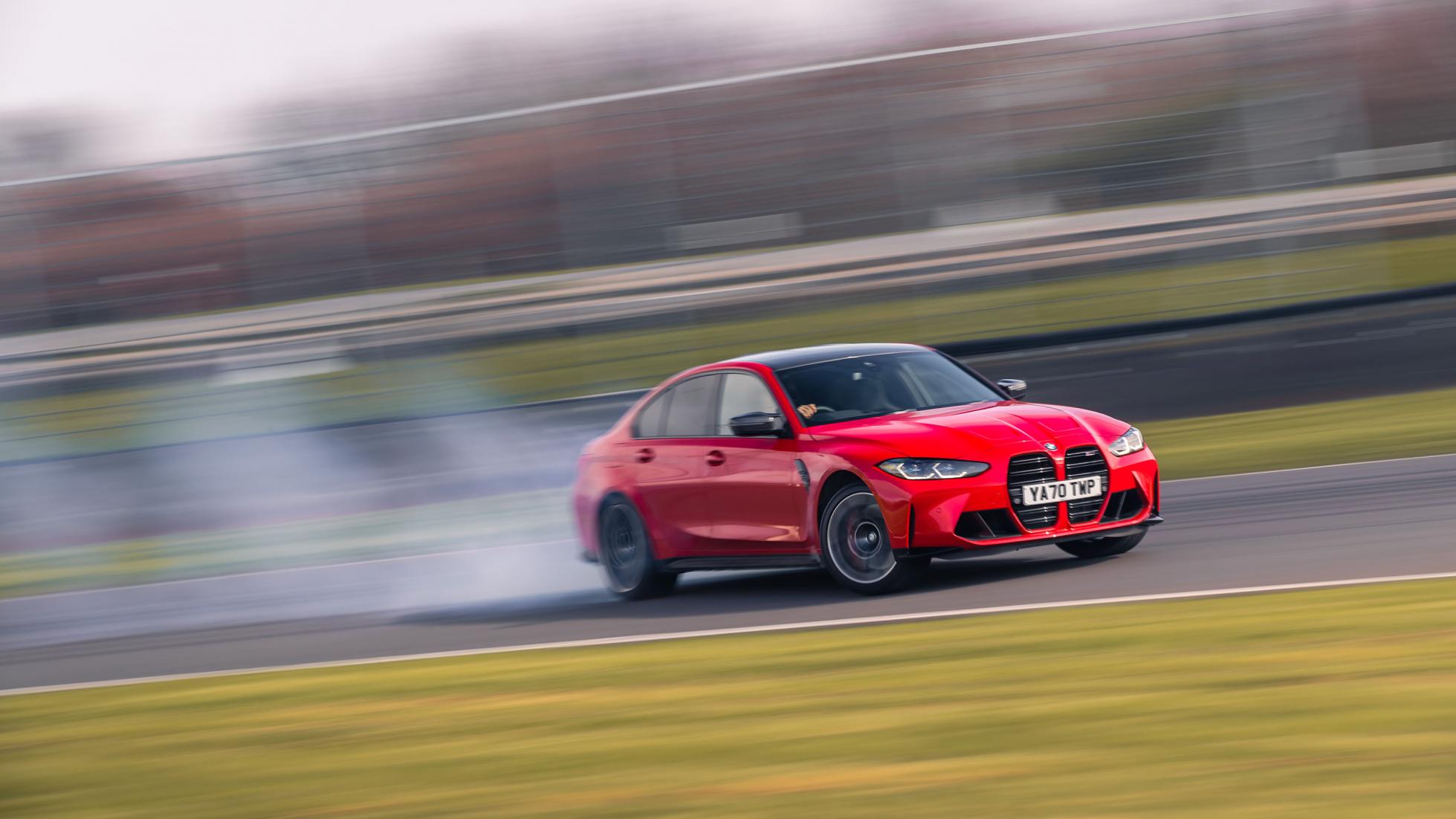
VERDICT – Final thoughts and pick of the range
Ignore the grille, what lies behind makes the M3 the most complete sports saloon on sale today.
This one’s a belter. No other sports or super-saloon is as capable, grippy, tied down, responsive or communicative on a difficult road. Yes it’s heavier than before. No, it’s not an issue. At all. In its ability to deliver speed and composure it’s a huge step on from before and has perhaps the best chassis of any contemporary M3 since the E46 twenty years ago.
If there’s a downside it’s that the engine now plays second fiddle to the chassis. In the past engines have been at the core of the M3’s appeal, but this latest one, although fearsomely potent, is less exciting to actually use – not least because it delivers torque with such ruthless efficiency you always need to have one eye on the speedo. The main part of the blame can probably be laid at the doors of the perfectly competent but otherwise unremarkable automatic gearbox. It would only have limited appeal, but we reckon the standard 473bhp M3’s manual gearbox would help to bring the powertrain to life. But sadly that’s not coming to the UK.
Photography: Jonny Fleetwood
